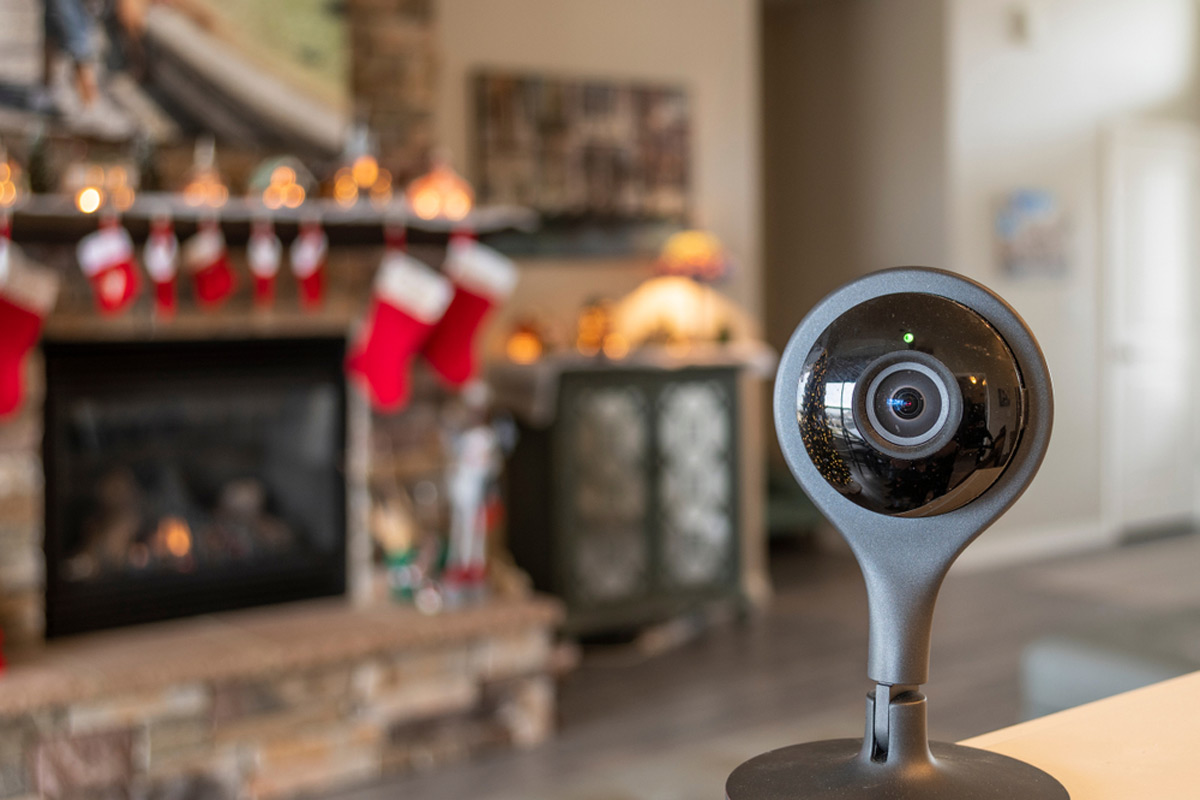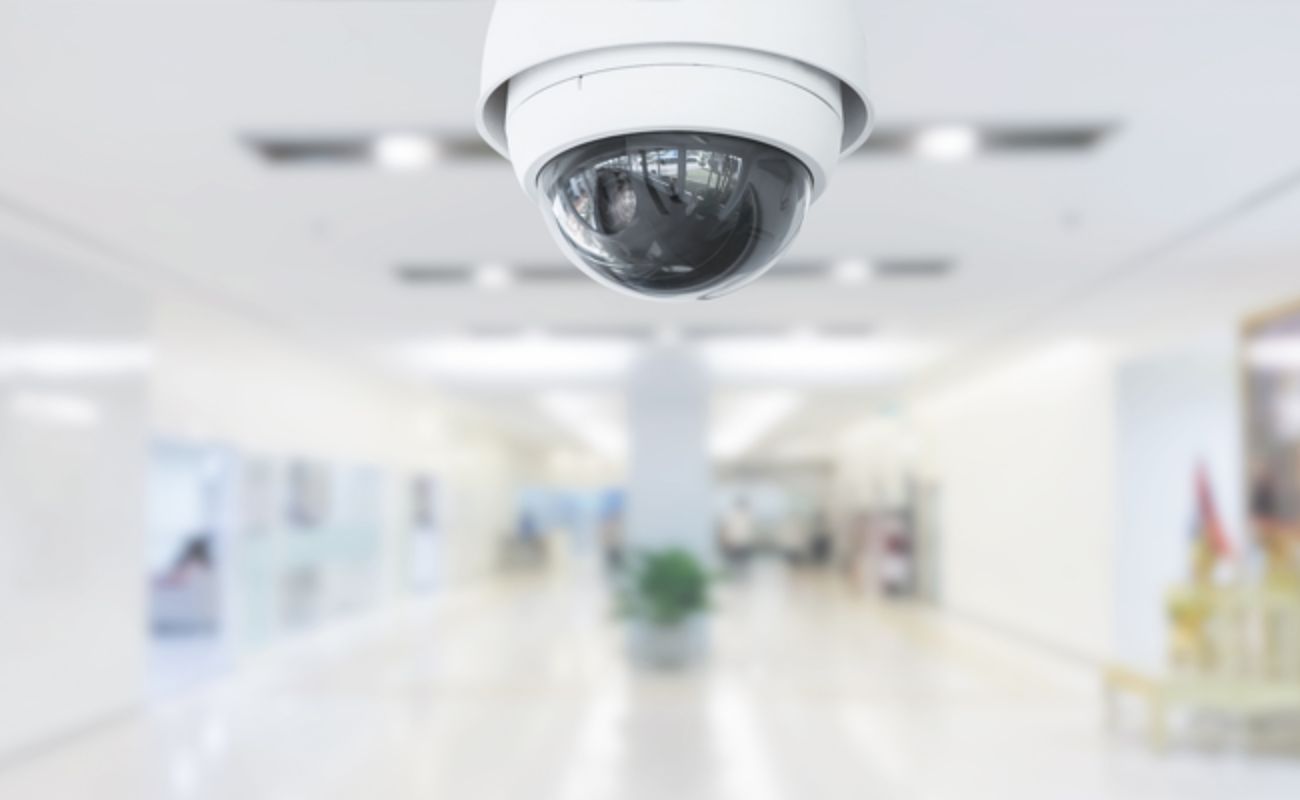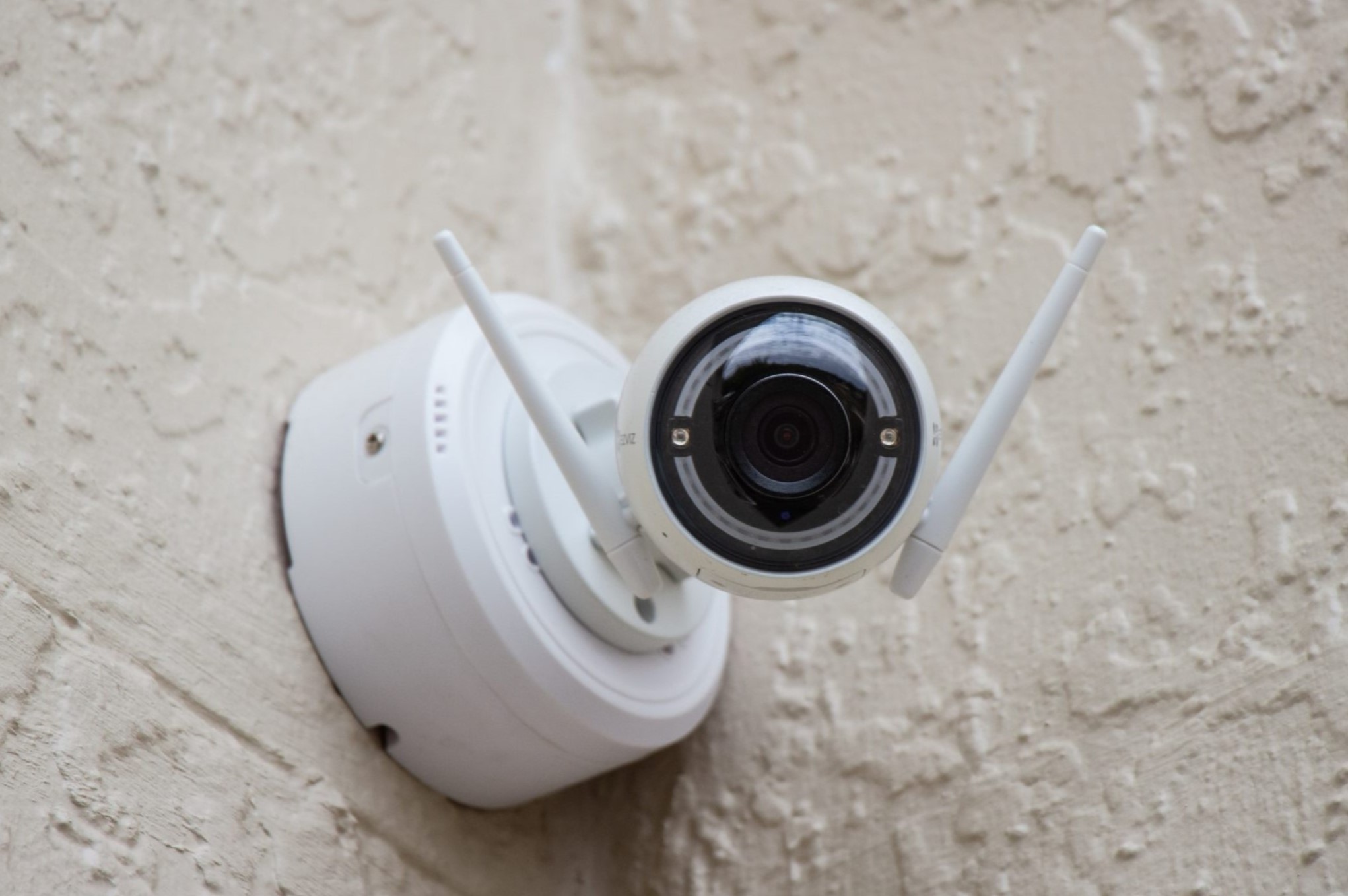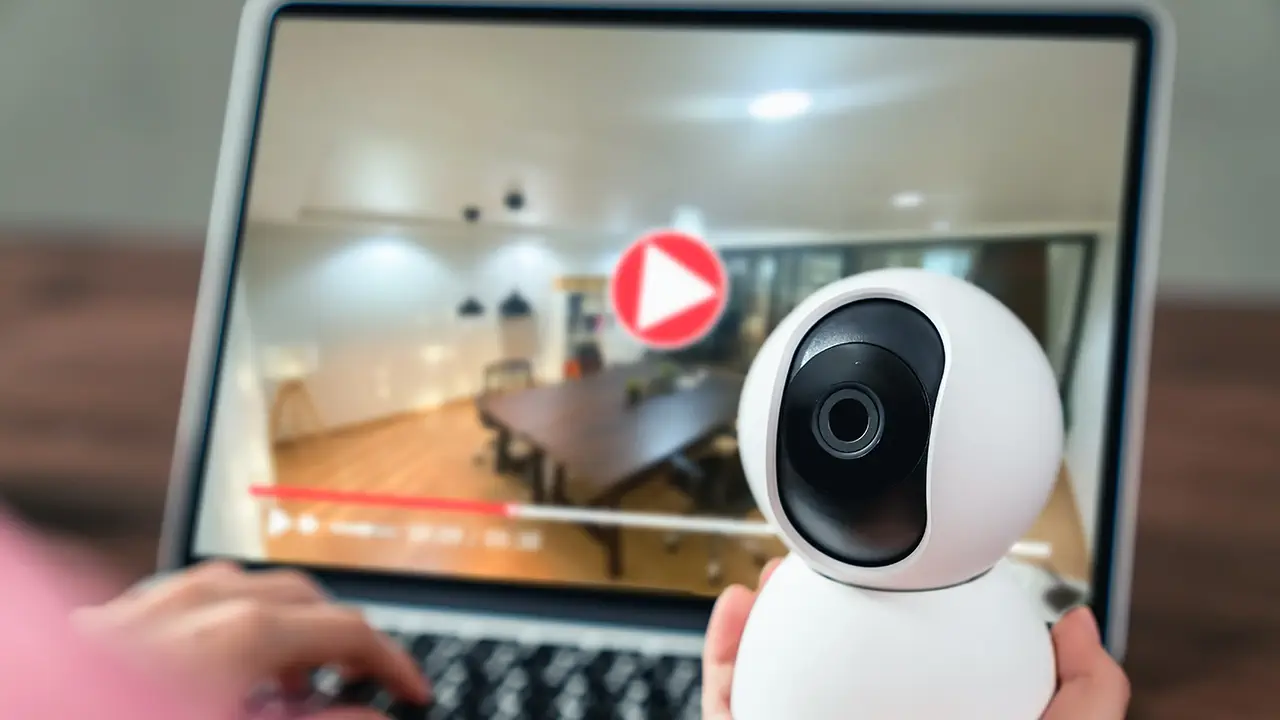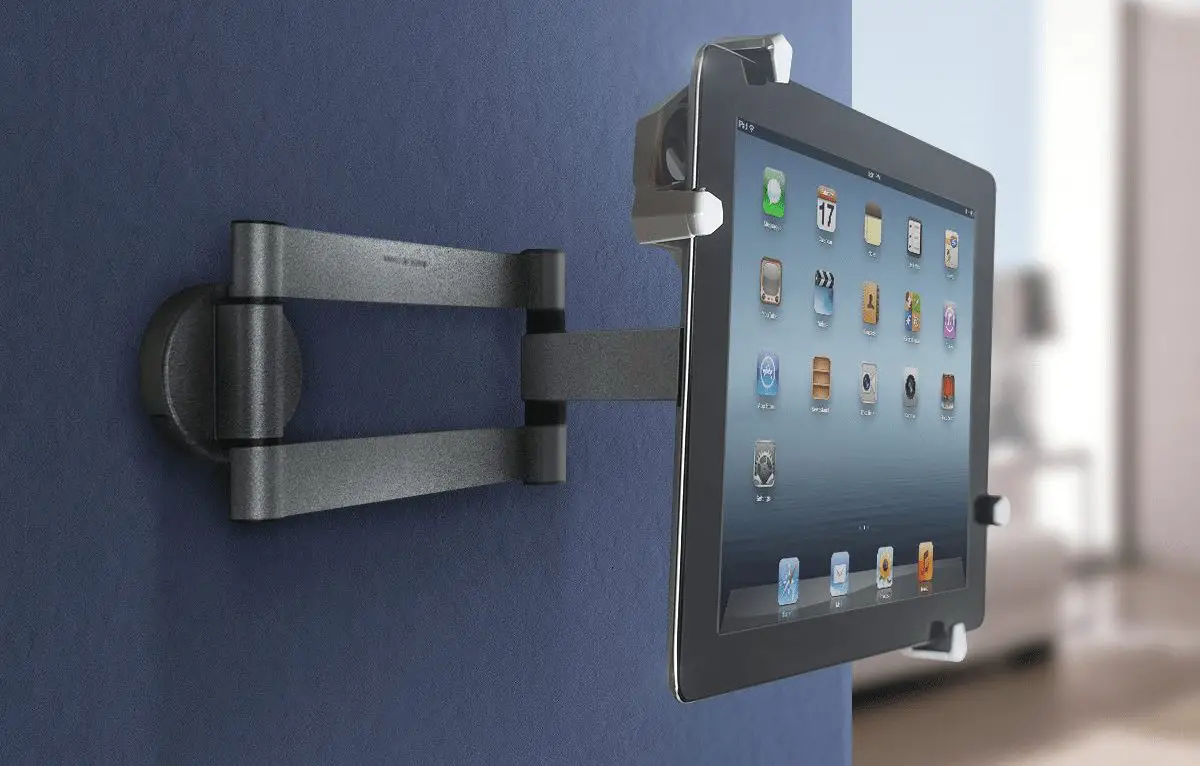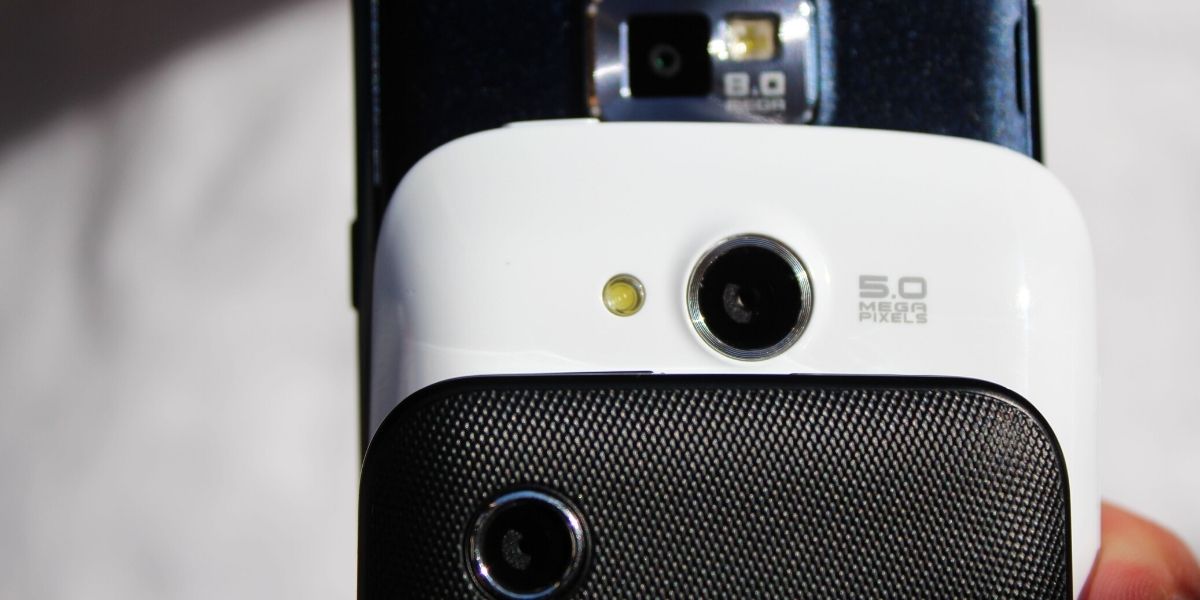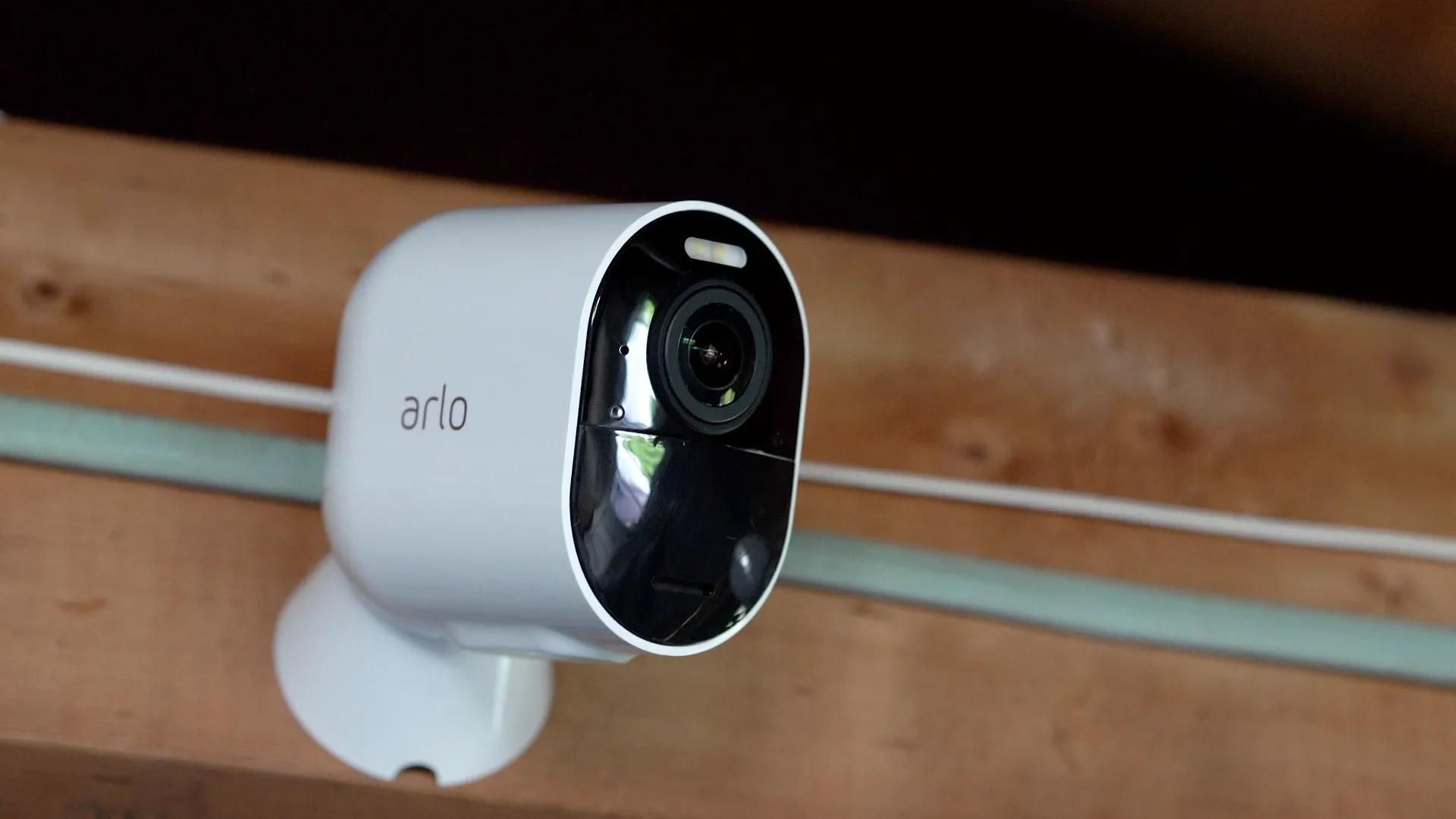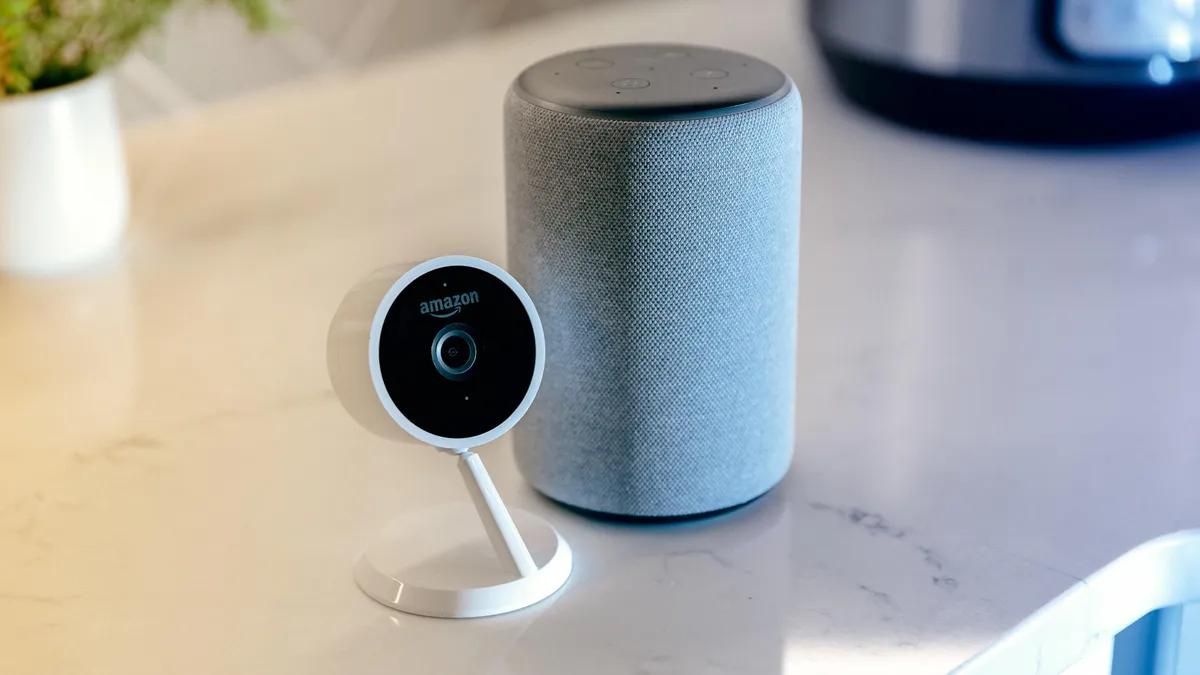Home>Home Security and Surveillance>How Much Data Does A Security Camera Use
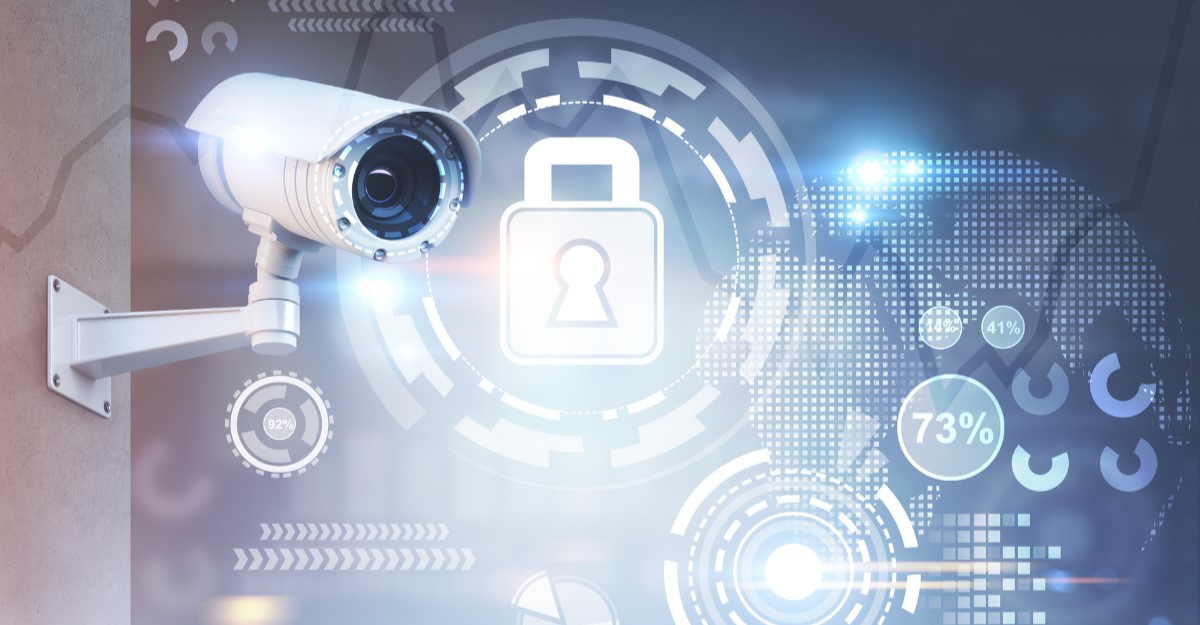

Home Security and Surveillance
How Much Data Does A Security Camera Use
Modified: October 21, 2024
Learn how much data a security camera uses and how to optimize your home security and surveillance system. Protect your home with efficient data usage!
(Many of the links in this article redirect to a specific reviewed product. Your purchase of these products through affiliate links helps to generate commission for Storables.com, at no extra cost. Learn more)
Introduction
Home security and surveillance systems have become increasingly popular as people aim to protect their homes and loved ones. These systems often include security cameras that allow homeowners to monitor their property remotely. However, one important consideration when choosing a security camera system is understanding how much data these cameras consume.
With the advancements in technology, security cameras are now capable of capturing high-resolution video footage and transmitting it over the internet. This capability allows homeowners to access live video feeds and recorded footage from anywhere using their smartphones or computers. However, this convenience comes with a trade-off – data usage.
Understanding the data usage of security cameras is crucial for several reasons. First and foremost, it helps homeowners estimate their internet bandwidth requirements to ensure smooth video streaming without any buffering issues. Additionally, it enables homeowners to manage their data consumption effectively, especially if they have limited internet plans or are concerned about exceeding data caps.
In this article, we will explore the factors that affect the data usage of security cameras and provide tips on managing data consumption effectively. By the end of this article, you will have a better understanding of how much data your security camera system may consume and how to optimize its usage.
Key Takeaways:
- Security cameras consume more data with higher resolution and frame rates, but efficient compression methods can help reduce data usage while maintaining video quality. Choosing motion-activated recording can also minimize unnecessary data consumption.
- To manage data usage effectively, adjust camera settings, utilize motion-activated recording, and consider storage optimization. Regularly monitoring data usage and considering internet bandwidth upgrades can ensure smooth video streaming without exceeding data limits.
Understanding Data Usage of Security Cameras
To understand the data usage of security cameras, it’s essential to consider various factors that impact the amount of data consumed. These factors include the camera’s resolution and frame rate, compression and encoding methods, recording modes, and internet bandwidth requirements.
The resolution of a security camera refers to the number of pixels that make up each frame of the video. Higher resolution cameras, such as 4K or 1080p, capture more detail but also require more data to transmit and store the footage. Cameras with lower resolutions, such as 720p or standard definition, use less data but may not provide as much clarity in the recorded video.
The frame rate of a security camera refers to the number of individual frames captured per second. A higher frame rate results in smoother and more fluid video playback but also increases data consumption. Most security cameras offer the option to adjust the frame rate based on your preferences and requirements.
Compression and encoding methods play a significant role in reducing the size of the video files without compromising the quality too much. Most security cameras use compression algorithms, such as H.264 or H.265, to compress the video footage before transmitting it over the network. These compression methods significantly reduce the data size while maintaining a good level of video quality.
The recording mode of a security camera affects its data usage as well. Some cameras continuously record video, while others only record when motion is detected. Continuous recording consumes more data as it captures and stores video footage at all times, even during periods of inactivity. On the other hand, motion-activated recording minimizes data usage by only capturing and storing video when there is movement within the camera’s field of view.
Internet bandwidth requirements depend on the camera’s streaming settings and the number of cameras in the system. If you have multiple cameras streaming high-resolution video simultaneously, it will significantly increase the data consumption. Therefore, it’s crucial to ensure that your internet plan can handle the required bandwidth to avoid excessive buffering or slow streaming.
By understanding these factors, you can make informed decisions when setting up and using your security camera system. It allows you to strike a balance between video quality and data consumption based on your specific needs and limitations.
Factors Affecting Data Usage
Several factors influence the data usage of security cameras, including the camera’s resolution and frame rate, compression and encoding methods, recording modes, and internet bandwidth requirements.
The resolution and frame rate of a security camera have a direct impact on data usage. Higher resolution cameras capture more detail but require more data to transmit and store the footage. Similarly, a higher frame rate results in smoother video playback but increases data consumption. It’s important to find a balance between video quality and data usage to ensure optimal performance.
Compression and encoding methods play an important role in reducing the size of video files without compromising too much on quality. Compression algorithms like H.264 and H.265 significantly reduce data size while maintaining reasonable video quality. Choosing a camera with efficient compression and encoding methods can help minimize data usage while preserving video clarity.
The recording mode of a security camera is another factor that affects data usage. Continuous recording consumes more data as it captures and stores video footage at all times, even during periods of inactivity. On the other hand, motion-activated recording only captures and stores video when there is movement within the camera’s field of view. By using motion-activated recording, you can significantly reduce data consumption without sacrificing important footage.
Internet bandwidth requirements depend on the camera’s streaming settings and the number of cameras in the system. If you have multiple cameras streaming high-resolution video simultaneously, it will substantially increase data consumption. It’s crucial to ensure that your internet plan can handle the required bandwidth to avoid buffering issues and slow streaming.
Additionally, factors like the length of recording and storage duration can affect data usage. Longer recording times and extended storage durations require more space, resulting in increased data consumption. If you need to store video footage for an extended period, consider using external storage options like network-attached storage (NAS) devices or cloud storage to manage data usage efficiently.
Understanding these factors can help you make informed decisions about the configuration and usage of your security cameras. By optimizing these settings based on your specific needs and limitations, you can strike the right balance between video quality and data usage.
Resolution and Frame Rate
The resolution and frame rate of a security camera are two key factors that directly impact data usage. Let’s explore how these factors influence the amount of data consumed by security cameras.
Resolution refers to the number of pixels that make up each frame of the video captured by the camera. Higher resolution cameras, such as 4K or 1080p, capture more detail and provide sharper images. However, higher resolution also means larger file sizes and increased data consumption. On the other hand, cameras with lower resolutions, such as 720p or standard definition, use less data but may result in slightly less detailed footage.
The frame rate of a security camera refers to the number of individual frames captured per second. A higher frame rate results in smoother and more fluid video playback, especially for fast-moving objects or scenes. However, an increased frame rate also leads to larger file sizes and higher data usage. Most security cameras offer adjustable frame rates, allowing you to choose the balance between video smoothness and data consumption that suits your needs.
When choosing the resolution and frame rate for your security camera, it’s essential to consider your specific requirements. If you need to capture fine details, such as facial features or license plate numbers, a higher resolution camera might be the ideal choice. However, if you prioritize minimizing data usage, a lower resolution camera could be a more suitable option.
Similarly, the frame rate requirement will depend on the specific application. For general monitoring purposes, a frame rate of 25 to 30 frames per second (fps) is typically sufficient. On the other hand, if your camera will be used to capture fast-moving objects or in scenarios that demand smooth video playback, you may opt for a higher frame rate of 60 fps or higher.
It’s worth noting that higher resolution and frame rate settings may also require more powerful hardware and internet bandwidth to handle the increased data load. Therefore, it’s crucial to ensure that your network infrastructure and internet plan can support the chosen resolution and frame rate settings without experiencing buffering or performance issues.
By carefully considering the resolution and frame rate settings of your security camera, you can strike a balance between video quality and data usage. Assess your needs and limitations to determine the optimal settings that meet your requirements while efficiently managing data consumption.
Compression and Encoding
Compression and encoding methods play a crucial role in managing data usage in security cameras. These techniques help reduce the size of video files without significantly compromising video quality. Let’s explore how compression and encoding impact data consumption.
Compression is the process of reducing the size of video files by eliminating redundant information and encoding the remaining data more efficiently. The most common video compression algorithms used in security cameras are H.264 (also known as AVC) and H.265 (also known as HEVC).
H.264 compression is widely used and offers a good balance between video quality and file size. It efficiently compresses video data while maintaining acceptable image quality. This compression method is suitable for most surveillance applications and security camera systems.
H.265 compression, on the other hand, is a more advanced compression technology that provides better video quality at lower bitrates compared to H.264. This results in smaller file sizes and reduced data usage. However, H.265 requires more processing power, and not all devices and software may support it. Therefore, compatibility should be considered when choosing a security camera system that utilizes H.265 compression.
In addition to compression, encoding methods are used to further reduce data size. Encoding involves converting video streams from raw data into a format that can be efficiently transmitted and stored. The most commonly used encoding method is Motion JPEG (M-JPEG). While M-JPEG offers excellent image quality, it tends to produce larger file sizes and therefore consumes more data compared to compressed codecs like H.264 and H.265.
Some security cameras also offer adjustable compression and encoding settings, allowing you to optimize the trade-off between video quality and data usage. You can choose the level of compression and encoding based on your specific needs and limitations. However, it’s important to strike a balance, as excessive compression can lead to reduced video quality, while insufficient compression can result in larger file sizes and increased data consumption.
It’s worth noting that compression and encoding settings may vary among different camera models and brands. It’s advisable to consult the manufacturer’s specifications or user manual to understand the available options and select the most suitable compression and encoding settings for your security camera system.
By utilizing efficient compression and encoding methods, you can significantly reduce the data consumption of your security camera system while maintaining acceptable video quality. Consider the compatibility, efficiency, and trade-offs associated with different compression and encoding technologies when selecting or configuring your security camera devices.
Consider the resolution and frame rate of your security camera. Higher resolution and frame rates will use more data. Also, consider using motion detection to reduce the amount of data used.
Read more: How Much Data Does Nest Outdoor Camera Use
Recording Modes
The recording mode of a security camera is an important consideration when it comes to managing data usage. Different recording modes offer varying levels of data consumption and storage requirements. Let’s explore the common recording modes found in security cameras and how they affect data usage.
1. Continuous Recording:
In continuous recording mode, the security camera captures and stores video footage continuously, regardless of whether there is any activity or motion detected. This mode provides complete coverage and ensures that no event goes unnoticed. However, continuous recording consumes a significant amount of data as video footage is recorded and stored continuously, even during periods of inactivity.
2. Motion-Activated Recording:
Motion-activated recording mode triggers the security camera to start recording only when motion is detected within its field of view. This mode optimizes data usage by capturing footage only when there is activity, thus reducing the amount of data consumed. Motion-activated recording helps conserve storage space as well, as it eliminates the need to store long periods of empty footage.
3. Scheduled Recording:
Scheduled recording allows you to specify specific time intervals during which the security camera will record video footage. This mode gives you control over when the camera should be actively recording, reducing unnecessary data usage during times when surveillance might not be needed. For example, you can schedule the camera to record only during specific hours of the day or when you are away from home.
4. Event-Triggered Recording:
Event-triggered recording mode is designed to capture specific events or incidents. The camera is configured to start recording when certain predefined events occur, such as a door opening, a window breaking, or the activation of a motion sensor. This mode minimizes data consumption by recording and storing footage only when significant events take place.
Choosing the appropriate recording mode depends on several factors, including your surveillance requirements, available storage capacity, and desired level of data usage. If you need continuous monitoring or have a high-security requirement, continuous recording may be necessary. However, if data usage and storage capacity are concerns, motion-activated or event-triggered recording modes are more suitable options.
It’s also worth mentioning that some security camera systems allow flexible configurations, combining different recording modes for different cameras or specific areas within the camera’s field of view. This customization gives you the ability to optimize data usage based on varying surveillance needs across different areas of your property.
By selecting the appropriate recording mode and adjusting settings based on your specific requirements, you can effectively manage data consumption while ensuring your security camera system provides the necessary coverage and recording capabilities.
Internet Bandwidth Requirements
When it comes to security cameras, internet bandwidth plays a crucial role in ensuring smooth video streaming and managing data usage. Understanding the internet bandwidth requirements of your security camera system is essential to avoid buffering issues and maximize the efficiency of data consumption. Let’s delve into the factors that influence internet bandwidth requirements.
1. Number of Cameras:
The number of cameras in your security camera system directly impacts the internet bandwidth requirements. Each active camera will consume a certain amount of bandwidth to transmit video data. As the number of cameras increases, so does the overall bandwidth usage. It’s crucial to take this into account when assessing the available internet bandwidth capacity.
2. Resolution and Frame Rate:
The resolution and frame rate settings of your security cameras significantly impact the internet bandwidth requirements. Higher-resolution cameras and higher frame rates result in larger video file sizes, requiring more bandwidth to transmit the data. It is important to find the right balance between video quality and internet bandwidth availability to ensure smooth video streaming without causing network congestion.
3. Compression and Encoding:
The compression and encoding methods used by your security cameras also affect internet bandwidth requirements. Efficient compression algorithms like H.264 and H.265 reduce the size of video files, minimizing the amount of data that needs to be transmitted over the network. Choosing cameras that utilize efficient compression and encoding methods can help optimize bandwidth usage while maintaining acceptable video quality.
4. Streaming Settings:
The streaming settings of your security cameras can impact internet bandwidth requirements as well. Some cameras offer adjustable streaming settings that allow you to control the bit rate, which determines the amount of data transmitted per second. Lowering the bit rate decreases the bandwidth usage but may result in lower video quality, while increasing the bit rate improves video quality but requires more bandwidth.
5. Network Infrastructure:
Finally, the overall quality and capacity of your network infrastructure influence the internet bandwidth requirements for your security camera system. A stable and reliable network connection with sufficient bandwidth capacity is crucial to ensure smooth video streaming and prevent any bottlenecks or congestion. Upgrading your network infrastructure, if necessary, can help avoid connectivity issues and ensure optimal performance.
When planning your security camera system, it’s essential to assess your internet bandwidth capacity and compare it against the estimated bandwidth requirements based on the number of cameras, resolution, frame rate, compression, and encoding settings. This will help you determine if your current internet plan can handle the data demands of your security camera system or if upgrading your internet connection is necessary.
By considering these factors and optimizing your security camera system’s streaming settings, you can ensure that your internet bandwidth is effectively utilized, providing smooth and reliable video streaming without compromising video quality.
Data Usage Estimates
Estimating data usage for security cameras is crucial for effectively managing internet bandwidth and avoiding excessive data consumption. Although exact data usage can vary depending on factors such as resolution, frame rate, recording mode, and compression, we can provide some general estimates to give you an idea of what to expect. Keep in mind that these are rough estimates and may differ based on your specific camera settings and usage patterns.
1. Low-Resolution Cameras:
Security cameras with lower resolutions, such as 720p or standard definition, tend to have lower data consumption. On average, a low-resolution camera can use approximately 300MB to 500MB of data per hour of continuous recording. This estimate varies based on compression and encoding methods, as well as the level of motion detected in the scene. Motion-activated recording can significantly reduce data usage, as the camera only records when there is activity.
2. High-Resolution Cameras:
Higher-resolution cameras, such as 1080p or 4K, capture more detailed footage but consume more data. On average, a high-resolution camera can use around 1GB to 2GB of data per hour of continuous recording. Again, this estimate can vary based on compression and encoding settings, as well as the level of motion in the scene. Motion-activated recording can help reduce data usage compared to continuous recording, especially during periods of inactivity.
3. Multiple Camera Systems:
If you have multiple security cameras in your system, the total data usage will be the sum of the individual cameras’ usage. For example, if you have three cameras with an average data consumption of 500MB per hour each, the total data usage for the system would be approximately 1.5GB per hour of continuous recording. It’s essential to consider the cumulative data usage when planning your internet bandwidth and data storage capacity.
4. Compression and Encoding:
The choice of compression and encoding methods can significantly affect data usage. Efficient compression algorithms like H.264 and H.265 can reduce data consumption compared to uncompressed or less efficient codecs. Compression ratios can vary, but on average, H.264 can reduce data sizes by 50% to 60%, while H.265 can offer even greater compression, reducing data sizes by up to 50% compared to H.264.
These estimates are a general guideline to help you assess data usage for your security camera system. To get a more accurate estimation, it’s recommended to consult the manufacturer’s specifications or user manual for your specific camera model, as they may provide more detailed information regarding data usage under various settings.
By being aware of the estimated data usage of your security camera system, you can effectively manage your internet bandwidth, data storage, and ensure that your system performs optimally without exceeding data caps or experiencing slow streaming speeds.
Tips for Managing Data Usage
Managing data usage is crucial for maximizing the efficiency of your security camera system and avoiding unnecessary costs or performance issues. Here are some useful tips to help you effectively manage data usage:
1. Optimize Camera Settings:
Adjust the resolution, frame rate, and compression settings of your security cameras to find the right balance between video quality and data consumption. Lowering the resolution and frame rate or using efficient compression algorithms can help reduce data usage without compromising important details.
2. Utilize Motion-Activated Recording:
Enable motion-activated recording mode on your security cameras instead of continuous recording. This ensures that video footage is only captured and stored when there is activity, significantly reducing data usage during periods of inactivity.
3. Adjust Recording Duration:
Consider adjusting the recording duration on your cameras. Shortening the duration of recorded footage can help minimize data consumption, especially if continuous recording is necessary. However, be mindful of adjusting it too short to ensure important events are captured.
4. Set Up Recording Schedules:
Take advantage of scheduling features on your security camera system to record only during specific times when surveillance is needed. This can help reduce unnecessary data usage during periods when monitoring isn’t required, such as when you’re at home or during certain hours of the day.
5. Opt for Storage Optimization:
Choose efficient storage options for your video footage. Utilize features such as motion-based video retention, which automatically removes old footage that is no longer necessary. Consider using network-attached storage (NAS) devices or cloud storage solutions to expand your storage capacity and manage data usage effectively.
6. Regularly Review and Delete Unnecessary Footage:
Periodically review your recorded footage and delete any unnecessary files or segments that are no longer needed. This helps free up storage space and reduces data usage in the long run.
7. Monitor and Track Data Usage:
Keep a close eye on your data usage and monitor any unexpected spikes. Many security camera systems offer data tracking features or provide data usage reports. This allows you to identify trends, adjust settings if necessary, and ensure that you stay within your internet plan’s data limits.
8. Consider Bandwidth Upgrade:
If you find that your security camera system consistently exceeds your internet plan’s bandwidth capacity, consider upgrading to a higher-speed plan or switching to an internet provider that offers more generous data allowances. This ensures smooth video streaming and minimizes buffering issues.
9. Limit Remote Viewing or Lower Stream Quality:
If you frequently access your security camera footage remotely, consider limiting remote viewing or decreasing the stream quality when you’re on a mobile data network. This helps conserve data usage, especially if you have a limited mobile data plan.
10. Consult Manufacturer’s Documentation:
Refer to the manufacturer’s documentation or user manual for your specific security camera system. They may provide additional tips and recommendations for managing data usage based on the features and capabilities of your cameras.
By implementing these tips, you can effectively manage data usage, optimize your security camera system’s performance, and ensure that your surveillance needs are met without exceeding data limits or compromising video quality.
Read more: How Much Power Does A Security Camera Use
Conclusion
Understanding and managing data usage is crucial when it comes to security camera systems. By considering factors such as resolution, frame rate, compression, recording modes, and internet bandwidth requirements, you can effectively optimize data consumption while maintaining the necessary level of video quality.
Higher-resolution cameras and higher frame rates will consume more data, while compression and encoding methods like H.264 and H.265 can help reduce file sizes and minimize data usage. Choosing the right recording mode, such as motion-activated or scheduled recording, allows you to capture essential footage while minimizing data consumption during idle periods.
Estimating data usage based on the number of cameras, resolution, and frame rate can help you assess the required internet bandwidth and storage capacity. Additionally, following tips such as optimizing camera settings, utilizing motion-activated recording, adjusting recording schedules, and monitoring data usage can help manage data consumption effectively.
By managing data usage, you can ensure smooth video streaming, avoid buffering issues, and stay within your internet plan’s data limits. Regular review and deletion of unnecessary footage, as well as considering storage optimization options like NAS devices or cloud storage, can help maintain adequate storage space and reduce data consumption in the long run.
Remember to consult the manufacturer’s documentation and user manual for your specific security camera system for further guidance on managing data usage based on your camera’s features and capabilities.
In conclusion, understanding and effectively managing data usage are key to maximizing the performance and efficiency of your security camera system. By implementing the tips and considerations outlined in this article, you can strike the right balance between video quality and data consumption, ensuring the safety and security of your home while optimizing your digital resources.
Frequently Asked Questions about How Much Data Does A Security Camera Use
Was this page helpful?
At Storables.com, we guarantee accurate and reliable information. Our content, validated by Expert Board Contributors, is crafted following stringent Editorial Policies. We're committed to providing you with well-researched, expert-backed insights for all your informational needs.



